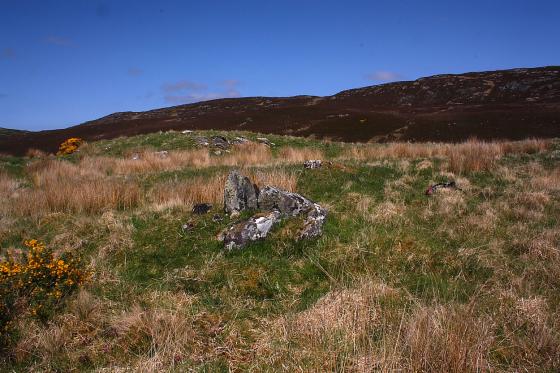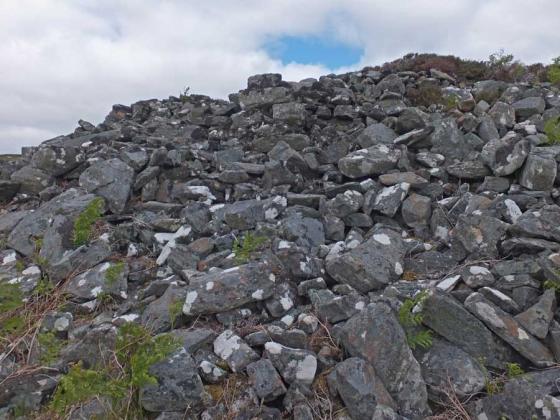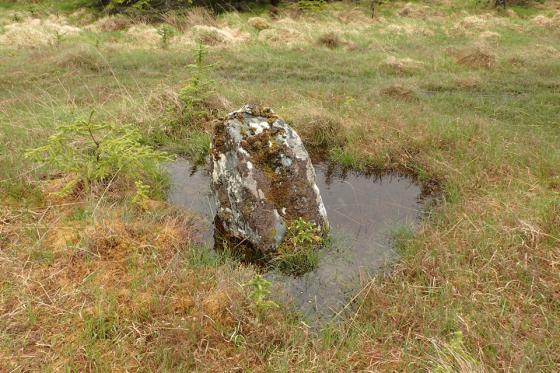
Dun Viden sits atop a mound approximately 20 metres tall. This is the view on approach from the track.

Dun Viden sits atop a mound approximately 20 metres tall. This is the view on approach from the track.

One of the few sections still with original walling stones in place.

There are still some areas where massive foundation walling course boulders remain to be seen.

The entrance passage still exhibits some neat walling stones in situ.

This panoramic composite photograph shows Dun Viden, with its well defined entrance passage to the left.

This is a panorama encompassing the rubble-strewn walling on the northern arc of the broch.

Dun Viden has been extensively robbed, and most of the walling has been reduced to little more than a low rubble field. The river Naver can be seen beyond, snaking its way up Strathnaver.
Visited: June 28, 2018
Dun Viden lies in Strathnaver, some ten kilometres south of Bettyhill and just 250 metres to the east of the River Naver. It can be reached by driving to the end of the metalled road to Skelpick, then walking an excellent (though rough in places) estate road for a further 4 km. As the broch comes into view, you will be aware of a number of standing stones just west of the road, the only surviving evidence of a Neolithic Tomb. At this point, cut across the heather to the broch.
The broch sits atop a grassy, twenty metre tall, conical knoll which slopes steeply down on all sides except the east. The structure has been severely robbed, almost certainly to aid construction of the Settlement (a so-called ‘Clearance Village’) that still stands immediately adjacent to the southeast of its knoll.
Although badly ruined, Dun Viden still has a recognisable entrance passage to its southeast, but most of the walling and interior have been reduced to a field of amorphous rubble. There are, however, a few places where large foundation level stones along the external wall face can still be seen.
Dun Viden must have been a great look-out point in its day; and remains so.











































